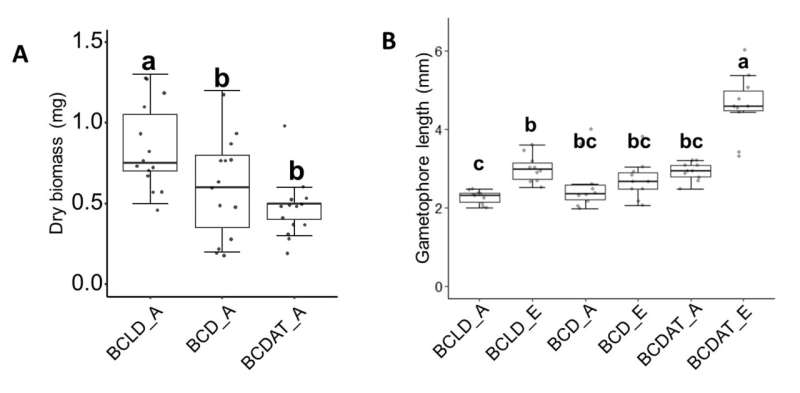This article has been reviewed according to Science X's editorial process and policies. Editors have highlighted the following attributes while ensuring the content's credibility:
fact-checked
peer-reviewed publication
trusted source
proofread
Insights into moss growth under elevated carbon dioxide levels may benefit climate change models

Approximately 12,000 species of mosses exist and cover close to 4 million square miles of earth, equivalent to the size of Canada, and are ecologically and evolutionarily important. Mosses play an essential role in rainwater retention, decreasing plant pathogens and increasing carbon sequestration in soil, thus improving the overall soil health.
Mosses also protect long-term carbon storage systems, such as bogs and permafrost. Moss growth is increasingly used in models to improve the accuracy of climate change predictions. However, the impact of key climate variables such as elevated CO2 (eCO2) levels on mosses remains underexplored.
Mosses experience eCO2 levels differently than most land plants. Being small, they grow close to the soil surface, and are exposed to CO2 released due to decomposition of soil organic matter. Thus, mosses are likely exposed to considerably higher CO2 levels than most other plants.
Unlike flowering plants, mosses do not use stomata for CO2 entry and therefore may have less access to the available CO2. Consequently, how mosses will respond to eCO2, whether they will benefit from eCO2 and the extent to which their response will differ from other land plants posed important and interesting questions.
A collaborative research team from the Pandey and Allen labs at the Donald Danforth Plant Science Danforth Center addressed these questions and demonstrated that the model moss Physcomitrium patens (P. patens) gains three-fold more biomass in elevated CO2 conditions by adjusting its growth, metabolism and physiology.
Their work, Physcomitrium patens response to elevated CO2 is flexible and determined by and interaction between sugar and nitrogen availability, was recently published in New Phytologist. Their results demonstrated that the increase in biomass was due to improved photosynthesis and a delicate balancing of life cycle transition between diffuse and profuse growth depending on nitrogen and carbon availability.
"Mosses are the major vegetation sustaining natural long-term carbon storage systems like permafrost and bogs. Moss-cover over the permafrost insulates them from direct sunlight and avoid thawing. In bog ecosystems, Sphagnum mosses has been providing conditions suitable for sequestering carbon for several millenniums. So, mosses are pertinent to the actions on today's climate emergency," said the lead author of the study, Boominathan Mohanasundaram, Ph.D., post-doctoral scientist in the Pandey laboratory.
This study relied on the state-of-the-art core facilities at the Danforth Center, including the Mass Spectrometry and Proteomics and Plant Growth facilities. "The capacity to produce impactful, rigorous science comes from leveraging the expertise and instrumentation available here at the Center," noted Somnath Koley, Ph.D., research scientist in the Allen USDA-Agriculture Research Service Laboratory and a key collaborator.
This research offers a framework for comparing the eCO2 responses of P. patens with other plant groups. This research project is a part of the larger program supported by NSF Rules of Life program that aims to decipher epigenetic inheritance mechanism of eCO2 responses across a broad range of plants.
The current research also provides crucial insights into moss growth that may benefit climate change models. Although further studies are needed to evaluate the growth of other important moss classes with disparate ecological niches to assess the generality of the observed metabolic features, our results suggest that the eCO2 environment will likely enhance moss biomass accumulation and could reduce solar heat transfer to the soil to prevent the thawing of permafrost.
Extending the insights from this study to the survival, spread, and carbon assimilation capacity of mosses across a range of soil nitrogen and CO2 regimes will certainly help our understanding of how this important group of plants respond to the projected climate change in the future.
More information: Boominathan Mohanasundaram et al, Physcomitrium patens response to elevated CO2 is flexible and determined by an interaction between sugar and nitrogen availability, New Phytologist (2023). DOI: 10.1111/nph.19348
Journal information: New Phytologist
Provided by Donald Danforth Plant Science Center





















